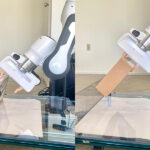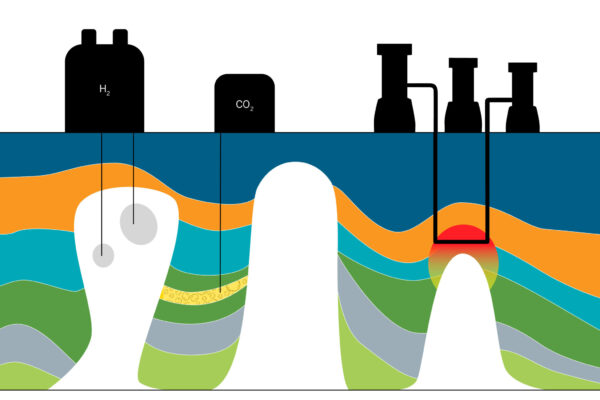重力波に含まれる「非線形」効果を示す新たな解析結果 New analysis shows “nonlinear” effects contained in gravitational waves
2023-02-21 カリフォルニア工科大学(Caltech)

This illustration depicts the ringdown phase of a black hole that has recently formed from the collision of two smaller black holes. A new model for this phase of black hole mergers shows the previously known linear effects (blue) and the newly discovered nonlinear effects (orange). The nonlinear effects, which have their own unique frequency, are created by the linear effects near the black hole’s light ring before they escape in the form of gravitational waves.
Credit: L. Stein (University of Mississippi)/K. Mitman (Caltech)
◆「非線形効果とは、浜辺の波が打ち寄せたり衝突したりするときに起こる現象です」と、キャルテックの大学院生で、コーネル大学と兼任でキャルテックの理論天体物理学教授であるソール・ティーコルスキー(1974年博士号)と共同研究を行うキーフ・ミットマンが言う。「波動はそれ自体で動くというより、互いに影響しあっています。ブラックホール合体のような激しい現象では、このような効果が期待されますが、これまで私たちのモデルでは見ることができませんでした。シミュレーションから波形を抽出する新しい手法によって、非線形性を見ることができるようになりました。”
◆この研究は、Physical Review Letters誌に掲載されたもので、カリフォルニア工科大学、コロンビア大学、ミシシッピ大学、コーネル大学、マックスプランク重力物理学研究所の研究者によるチームによるものです。
◆将来的には、LIGO(レーザー干渉計重力波観測所)が2015年に宇宙からの重力波を初めて直接検出して歴史を作って以来、日常的に観測している実際のブラックホール衝突について、この新しいモデルを使って詳しく知ることができるようになります。LIGOは、検出器を以前よりもさらに重力波に対する感度を高める一連のアップグレードを得て、今年後半に再点灯する予定です。
◆SXSのシミュレーションは、これまでLIGOによって検出された約100個のブラックホール合体の特定と特徴づけに役立っています。この新しい研究は、研究チームがリングダウン段階のシミュレーションで初めて非線形効果を確認したことを意味します。
<関連情報>
- https://www.caltech.edu/about/news/physicists-create-new-model-of-ringing-black-holes
- https://journals.aps.org/prl/accepted/61076Y54I7c1567b980f75c5aaa672c0e199adcff
ブラックホールリングダウンにおける非線形性 Nonlinearities in black hole ringdowns
Keefe Mitman, Macarena Lagos, Leo C. Stein, Sizheng Ma, Lam Hui, Yanbei Chen, Nils Deppe, François Hébert, Lawrence E. Kidder, Jordan Moxon, Mark A. Scheel, Saul A. Teukolsky, William Throwe, and Nils L. Vu
Physical Review Letters Accepted:15 December 2022
ABSTRACT
The gravitational wave strain emitted by a perturbed black hole (BH) ringing down is typically modeled analytically using first-order BH perturbation theory. In this Letter we show that second-order effects are necessary for modeling ringdowns from BH merger simulations. Focusing on the strain’s (ℓ,m)=(4,4) angular harmonic, we show the presence of a quadratic effect across a range of binary BH mass ratios that agrees with theoretical expectations. We find that the quadratic (4,4) mode’s amplitude exhibits quadratic scaling with the fundamental (2,2) mode—its parent mode. The nonlinear mode’s amplitude is comparable to or even larger than that of the linear (4,4) modes. Therefore correctly modeling the ringdown of higher harmonics—improving mode mismatches by up to two orders of magnitude—requires the inclusion of nonlinear effects.



